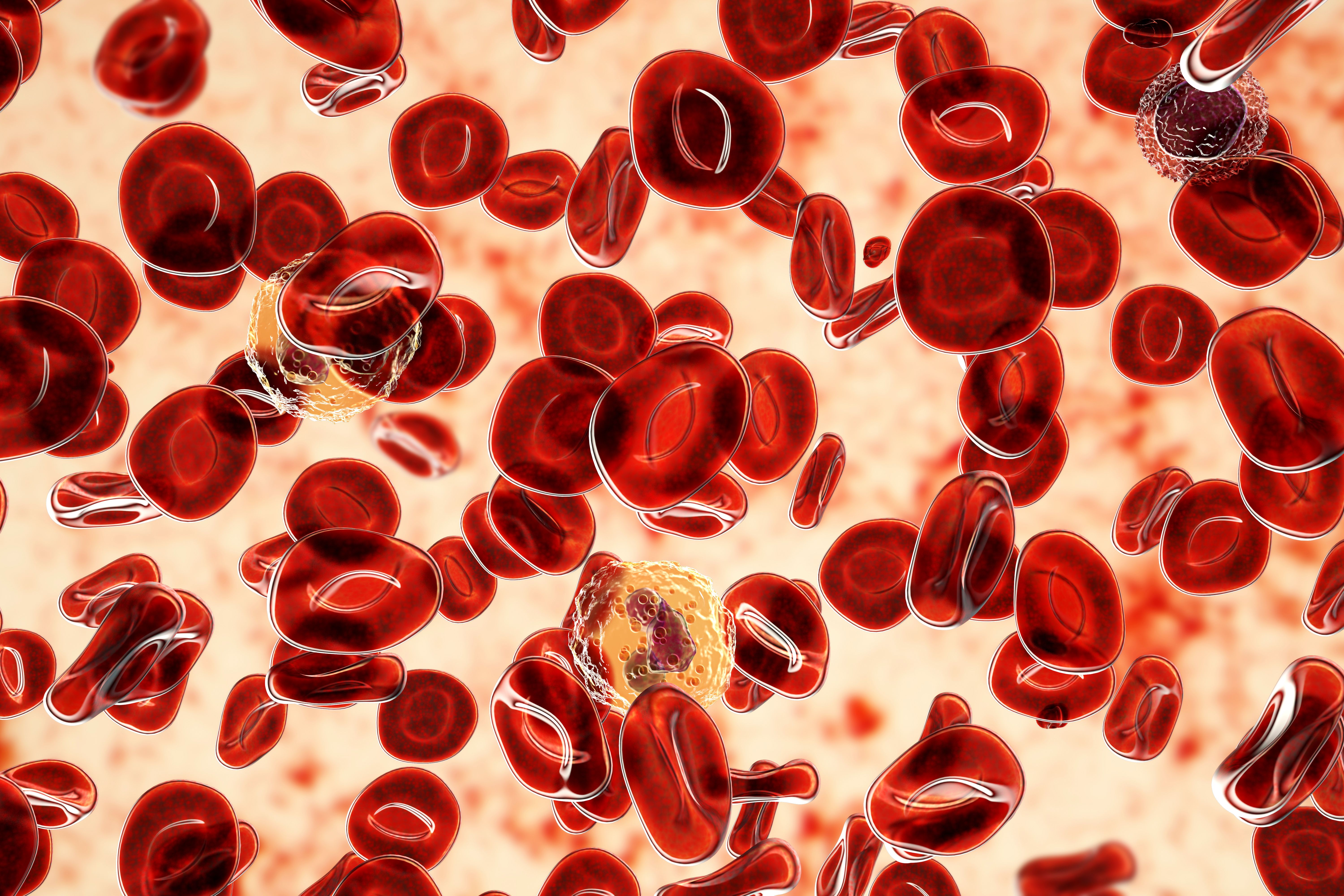- Center on Health Equity and Access
- Clinical
- Health Care Cost
- Health Care Delivery
- Insurance
- Policy
- Technology
- Value-Based Care
Younger Patients With PV May Benefit From Earlier Treatment With Cytoreductive Therapies
For most patients younger than age 60 with polycythemia vera (PV) who are not considered high risk, cytoreductive therapies are withheld despite being highly effective.
Polycythemia vera is a rare slow-growing blood cancer that causes an increase in the number of red blood cells being produced in bone marrow.
Image credit: Dr_Microbe - stock.adobe.com

Although patients younger than age 60 with polycythemia vera (PV) are typically not treated with cytoreductive therapy due to treatment toxicity concerns, this may result in an undertreatment of patients as there is no clear evidence that the risk of toxicity exceeds the potential benefit of treatment, according to a study published in Blood Advances.1
PV causes an overproduction of blood cells in the bone marrow, which leads to high numbers of circulating red blood cells.2 This thickens the blood, which may not flow through smaller blood vessels properly. Although PV can be diagnosed at any age, it most often occurs in people over the age of 60 years.2
For most patients, phlebotomy is the standard treatment, and it may be the only treatment needed for years. However, additional treatment to suppress the formation of blood cells in the bone marrow may be needed. Cytoreductive therapies, such as interferons, hydroxyurea, ruxolitinib, and anagrelide, may be needed, particularly for high-risk patients.3
Currently, cytoreductive therapies are not routinely recommended by the European LeukemiaNet or National Comprehensive Cancer Network for patients with PV younger than 60 years who don’t have a history of thrombosis, a high symptom burden, or an intolerance to phlebotomy.
“The rationale for withholding cytoreductive therapy is data sparse and driven by theoretical concerns for toxicity and unknown benefits from early treatment,” the authors wrote. “Yet, there is some evidence that early treatment is both well tolerated and potentially useful.”
They conducted a systematic review and meta-analysis to assess the risk-benefit trade-off of cytoreductive agents, interferons, and hydroxyurea in patients with PV younger than 60 years.
Fourteen studies were included in the final analysis, with a total of 2141 patients. In 12 studies, 744 patients received interferons and in 8 studies 1297 patients received hydroxyurea. Only 2 studies reported on ruxolitinib, so they were not included in the analysis.
For patients on interferons, the frequency of grade 3/4 toxicity ranged from 0% to 11%. The most common adverse events (AEs) were flu-like symptoms and liver enzyme dysfunction. For patients on hydroxyurea, only 2 studies reported on the frequency of grade 3/4 toxicities and the most common were hematologic and dermatologic AEs.
Additional findings:
- Over median treatment durations of 0.4 to 6.3 years, discontinuation rates for interferon treatment ranged from 4.6% to 37%
- In a pooled analyses of interferon studies, the overall frequency was 13% and the annualized rate was 5.2%
- Over median treatment durations of 0.5 to 14 years, discontinuation rates for hydroxyurea ranged from 2.6% to 17%
- In a pooled analysis of hydroxyurea studies, the overall frequency was 15% and the annualized rate was 3.6%
- Frequency of thrombotic events was 3.2% on interferons and 5.4% on hydroxyurea
- Progression to secondary myelofibrosis occurred at a frequency of 11% on interferons and 27% on hydroxyurea
- Progression to acute myeloid leukemia was infrequent
The average complete hematologic response was 62% for interferons and 52% for hydroxyurea, while the average partial hematologic response was 27.9% for interferons and 43.0% for hydroxyurea. For patients who were treated with interferons, the frequency of hematologic response increased over time.
Only 4 studies compared cytoreduction with a control arm of patients being treated with phlebotomy only, and patients on interferons had improved symptoms, improved hematologic and histomorphologic responses, and lower myelofibrosis incidence compared with phlebotomy only. There were no significant differences in myelofibrosis incidence between treatment with hydroxyurea and phlebotomy only. In the 4 studies, overall survival was either not reported or was not significantly different between cytoreduction and phlebotomy only.
“Future investigation of cytoreductive agents should prioritize the inclusion of [patients with polycythemia vera under the age of 60 years], allowing for the development of new, evidence-based clinical guidelines that can improve their management.
Reference
1. Chamseddine RS, Savenkov O, Rana ST, et al. Cytoreductive therapy in younger adults with polycythemia vera: a meta-analysis of safety and outcomes. Blood Adv. Published March 20, 2024. doi:10.1182/bloodadvances.2023012459
2. Polycythemia vera. National Organization for Rare Disorders. November 16, 2023. Accessed March 26, 2024. https://rarediseases.org/rare-diseases/polycythemia-vera
3. Wolpert J. What is cytoreductive therapy in MPNs? My MPN Team. December 29, 2021. Accessed March 26, 2024. https://www.mympnteam.com/resources/what-is-cytoreductive-therapy-in-mpns
Dr Kathy Zackowski Discusses the Importance of Rehabilitation Research and Trials in MS
April 26th 2024Kathy Zackowski, PhD, National MS Society, expresses the inherent value of quality rehabilitation trials for broadening clinical understandings of multiple sclerosis (MS) and bettering patient outcomes.
Read More
Kaiser Permanente was hit by a data breach in mid-April, impacting 13.4 million health plan members; GlaxoSmithKline (GSK) sued Pfizer and BioNTech for allegedly infringing on its messenger RNA technology patents in the companies’ COVID-19 vaccines; the CDC announced the first-known HIV cases transmitted via cosmetic injections.
Read More
